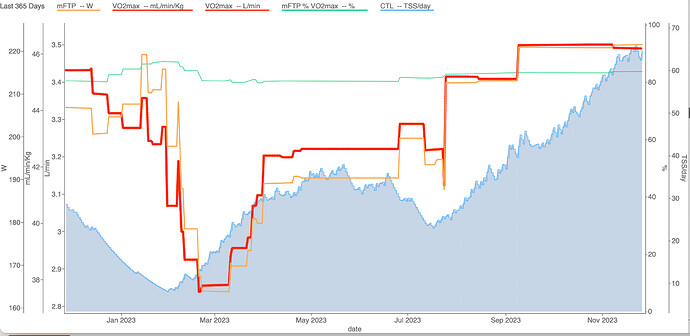I am taking the liberty of pasting a post from Steve Neal from the “Carbs for zone 1” topic in Physiology.
Steve, who along others here, has a wealth of experience in coaching at top levels and was one of of the podcasts, brings up an interesting point: The long slow rides in the polarized model may not work well for riders who only have a few hours a week to ride, those need to include harder efforts.
I hope that I am not misquoting some of what I have heard him say in the past. I started working with him in the early part of the year, and using his approach made substantial gains in three months, until health conditions precluded me from continuing.
I hope that this opens up a discussion among those that know a lot more than me about the best type of long distance riding for recreational athletes, which is likely most of us.
Steve had me do two hard trainer sessions, with an easy hour of riding the day between the sessions and the day after the second session.
The long Sunday ride built up in length over time but included 25-minute sessions at tempo or just above, interspersed with 30 minutes of zone 1 of 3 easy sections if I remember well, rather than the classic 3-4 hour only 65-70% max HR endurance ride, although the rides were about as long.
I remember him saying those long very easy endurance rides worked best if you had 15 hours a week to spare on the bike, but would not do much for the 7-hr week riders.
Looking forward to what comes out of this discussion.
Steve wrote:
"Yes I agree on the raise fatmax like FTP (although I don’t agree in FTP as it is screwed up emoji face here)
I was just try to say that I have no experience in limiting carbs early in a ride myself.
However, I would say that looking at not using carbs or starting a ride fasted does not always lead to a person burning, using, utilizing more fat…this I have seen on my metabolic cart.
I also know @micomico pretty well and sometimes training in this zone 1/2 range for certain people at certain times will NOT lead to overall fitness gains. I have seen this in many athletes trying to follow a zone 2/fatmax protocol, or polarization training plan. If there fat max is 100 watts, and they use this alone to ride their endurance with a 250-300 watt maximal aerobic power, they will train too easy during endurance and NOT improve.
On a bit of a rant here, but many cyclists who are trying to improve try to follow an idea that doesn’t make sense for them at that time.
It does matter what you are after. I just find that most recreational athletes trying to improve are focusing on the wrong thing when they begin, which holds them back from improving.
Sincerely,
Steve

